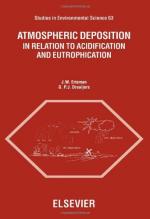|
This section contains 1,185 words (approx. 4 pages at 300 words per page) |

|
One of the most important types of water pollution, cultural eutrophication describes human-generated fertilization of water bodies. Cultural denotes human involvement, and eutrophication means truly nourished, from the Greek word eutrophic. Key factors in cultural eutrophication are nitrates and phosphates, and the main sources are treated sewage and runoff from farms and urban areas. The concept of cultural eutrophication is based on anthropocentric values, where clear water with minimal visible organisms is much preferred over water rich in green algae and other microorganisms.
Nitrates and phosphates are the most common limiting factors for organism growth, especially in aquatic ecosystems. Most fertilizers are a combination of nitrogen, phosphorus, and potassium. Nitrates are key components of the amino acids, peptides, and proteins needed by all living organisms. Phosphates are crucial in energy transfer reactions within cells. Natural sources of nitrates (and ammonia) are more readily available than phosphates...
|
This section contains 1,185 words (approx. 4 pages at 300 words per page) |

|


